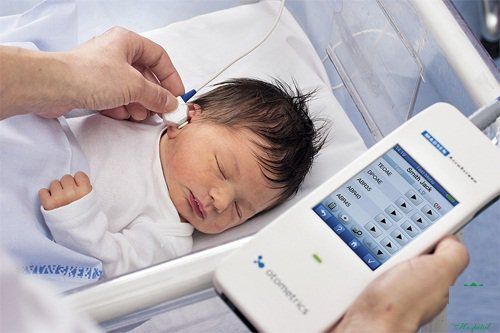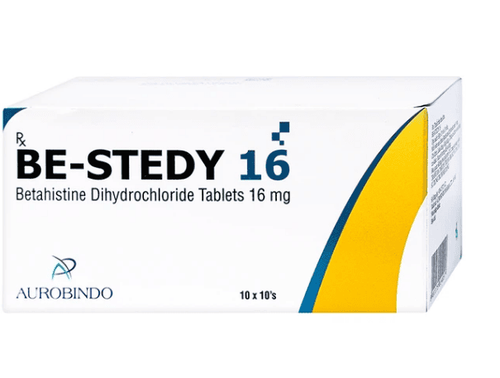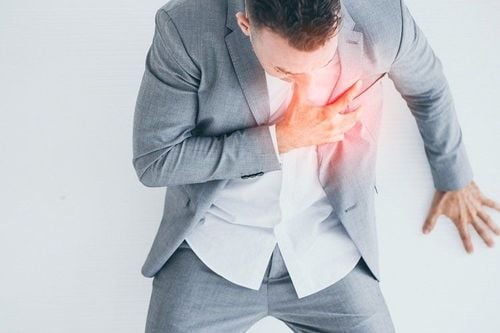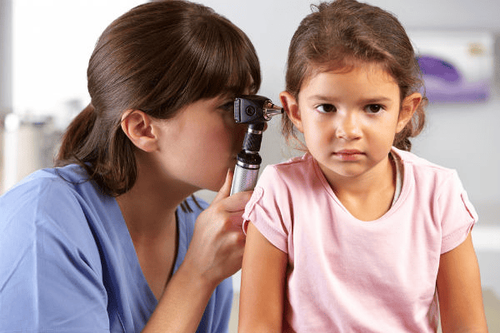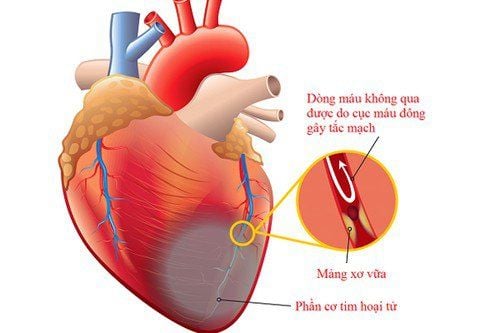This is an automatically translated article.
Hearing loss, hearing loss is a disease that seriously affects children's lives, leading to many obstacles in life. Rehabilitation for children with hearing loss plays an important role in helping children integrate into the community and actively shoulder their lives in the future.
1. Overview of hearing loss in children
1.1 What is hearing loss?
Children with hearing loss, deafness, hearing difficulties,... is a condition in which a child has a partial or total loss of hearing, making the child unable to hear with normal sound intensity. Children who lose hearing at birth or have hearing loss in the first years of life often do not have the ability to develop normal language, leading to the inability to speak.
Based on the degree of hearing loss, deafness/hearing impairment is divided into 4 levels: mild deafness (hearing sounds 20 - 40dB), moderate deafness (hearing sounds 41 - 70dB), severe deafness (hearing only). 71 - 90dB of sound) and profound deafness (only hearing sounds above 90dB).
Children with hearing loss face many difficulties such as:
In communication: Children have difficulty catching up with the surrounding conversations, do not understand the meaning of conversations. For deaf children, children will have to use signs and gestures to communicate, causing difficulties for people around them if they have not learned how to talk to deaf people; In learning: Children have difficulty in listening to lectures, causing many obstacles in learning. With subjects requiring listening - speaking - writing skills, children will face many difficulties; In social relations: Children with hearing loss often have many limitations in making friends and social relationships due to difficulties in communication; Psychological: Children have psychological obstacles because they cannot express their own needs or feel helpless because they do not understand what people around them express. This makes children often angry, irritable or guilty, self-deprecating, afraid to communicate.
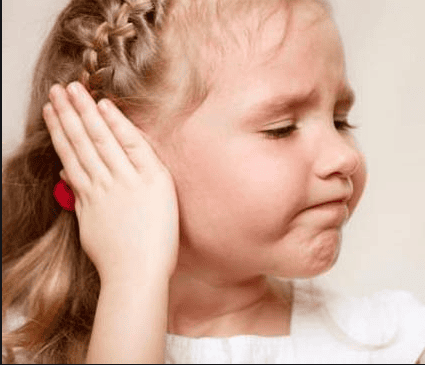
Giảm thính lực là rào cản cho trẻ trong giao tiếp, sinh hoạt
1.2 Causes of hearing loss
Includes the following causes:
Before birth: Children have ear deformities, ear defects; the mother is ill during pregnancy or from birth; During birth: Babies born prematurely under 6 months, weighing less than 2kg, having brain injury due to obstetric intervention (forcep); After birth: The baby has an infection (measles, mumps, encephalitis, meningitis), ear disease (otitis media), hearing poisoning caused by certain drugs, or a head injury.
1.3 Symptoms of children with hearing loss
Children are bewildered when listening to talk, learning to speak late; The child does not respond to all sounds; Children with lisp; Children must look at the mouth of the person talking to them to guess the content of the conversation.
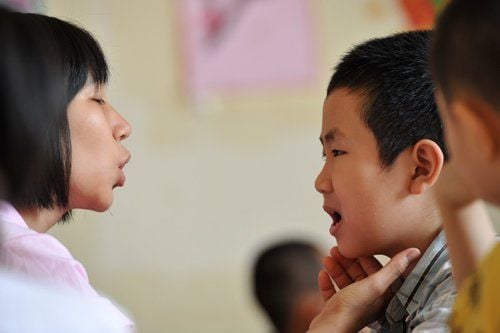
Nói ngọng là dấu hiệu trẻ bị giảm thính lực
2. Rehabilitation for children with hearing loss
In order for children with hearing loss to integrate into the community, the treatment of congenital hearing loss combined with rehabilitation plays a very important role.
2.1 Treatment for children with hearing loss
Treatment depends on the cause of the hearing loss. Specifically:
Hearing loss due to pathology: Including diseases such as otitis media, foreign bodies in the ear canal, earwax or trauma to the eardrum, etc., it is necessary to promptly detect and treat with drugs. or surgery. If handled in time, the chance to restore hearing for children is very large. For these children, it is necessary to pay attention to cleaning the ears - nose - throat during and after the treatment process to improve the effectiveness of treatment and prevent the disease from recurring; Hearing loss due to congenital, genetic or during birth, sequelae after encephalitis - meningoencephalitis, ... the child will not be able to recover hearing, must carry a lifelong disability. With these children, when detected early, they are fitted with hearing aids, hearing aids or cochlear implants, allowing them to learn to speak early and develop like normal healthy children. Hearing aids amplify sound intensity so that children can hear and receive information normally. The effectiveness of the device is maximized if the child is worn from the age of 0 - 3 years old, every day, all day long.
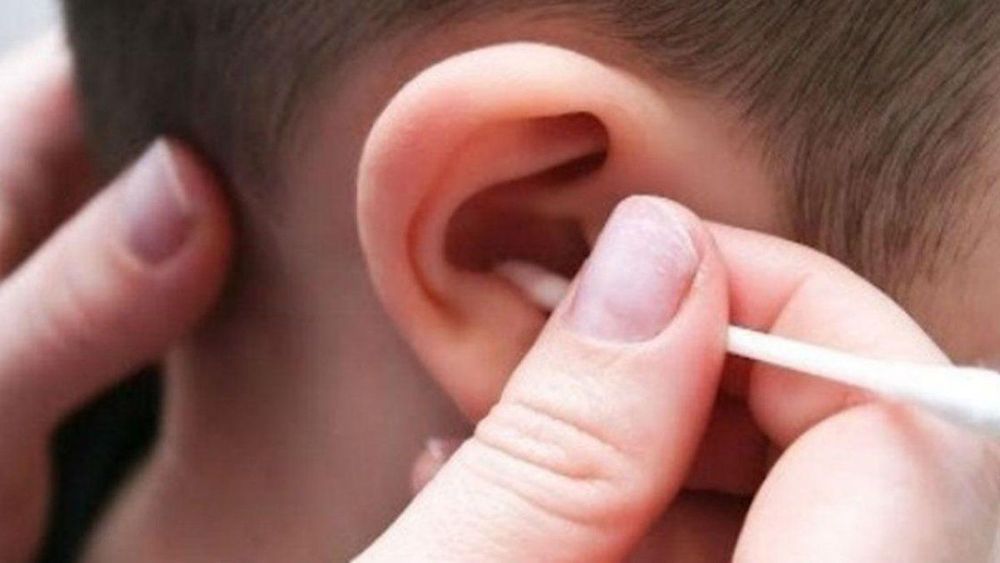
Vệ sinh tai mũi họng thường xuyên cho trẻ để điều trị giảm thính lực
2.2 Rehabilitation models for children with hearing loss
Children with hearing loss receive a comprehensive health examination, hearing ability, pronunciation, perception,... so that the family can choose the appropriate model and rehabilitation method. Some methods include:
Rehabilitation according to specialized model
Teaching culture: Children with large hearing loss over 6 years old, severe and profound deafness, not developing language,... are combined with teaching literature. education according to the primary school program and vocational rehabilitation (when the child is over 12 years old); Vocational training: For elderly deaf children to participate in learning according to cultural programs, combined with vocational guidance and vocational training suitable to the children's abilities and needs; Teaching life skills: Young deaf children are taught to use the toilet, brush their teeth, wash their faces, take a bath, get dressed, etc. Older deaf children are given psycho-physiological counseling, sex education and guidance. housework; Other activities: Ethical education; increase cultural and artistic activities to strengthen children's confidence; supporting children to study, receive treatment and find a job; guide parents how to care and educate children at home. Rehabilitation according to the integration model
Deaf children who can hear through hearing aids or cochlear electrodes will receive individual interventions to restore hearing and speech function. Children can attend schools like normal healthy children. Children with early intervention can restore speech language and hearing ability, and integrate with healthy children.
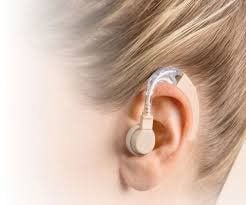
Trẻ em giảm thính lực có thể nghe được qua máy trợ thính
2.3 Details of rehabilitation for children with hearing loss
The general rule is to continue communicating with the child as usual. Then, pay attention to instruct the child as follows:
Instructions for children with mild hearing loss
In the classroom, arrange for the child to sit in a convenient position such as at the beginning of the class, better direct the headset towards in the middle of the class, teachers should speak louder and clearer when communicating with children; Position the speaker to the child as close as possible. At home or in inclusive classrooms, teachers should gesture while talking to children to observe the interlocutor's mouth. Instructions for children with severe hearing loss
Adults should teach children to communicate by non-verbal forms such as facial expressions, posture, eyes, mouth shape,... Specifically:
Mouth shape: It is the movement of the mouth when speaking. Children with hearing loss often have to read oral pictures to understand what others want to communicate. Therefore, when talking to children, it is necessary to speak slowly, use short sentences so that children can observe the mouth shape. The instruction for children should start with lip sounds, single, choose different objects, speak without pointing at objects so that children gradually recognize; Sign: Use hand movements to communicate with children with hearing loss. The way to teach children to use signs is to put objects close to each other, when they need to say something, point and make signs about that object. There are many different sets of signs such as personal pronouns, animals, utensils, food,...;
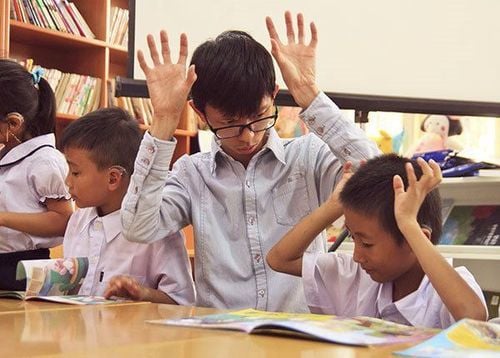
Ra dấu là một hình thức giao tiếp với trẻ nghe kém ở mức độ nặng
Use finger letters: A finger movement to describe Vietnamese letters. When communicating, children will use their fingers, putting them together into sentences. Can guide children to use finger letters when they begin to learn letters; Listening training: Let children practice listening to detect sounds, distinguish different sounds, distinguish speech,...; Speech training: Teach children how to make different sounds, so that they can imitate the sounds. Then, when the child is 1 year old, teach the child to say single words, then teach the child to speak from short to long sentences. For severely deaf children, wearing hearing aids, although the above measures are less effective, are still good methods of communication. For families with conditions, it is possible to give children a cochlear implant from an early age and practice listening and speaking so that when they grow up they have the opportunity to communicate normally like other children.
Social interventions
Create conditions for children to communicate and play with other children to help them integrate into the community better; Allow children to join clubs and associations of people with disabilities to exchange information and communicate in synthetic languages. Rehabilitation for children with hearing loss needs to be carried out in a long-term and methodical manner to bring about the best results, so that children can integrate into the community and live normally. To reduce the risk of hearing loss, it is necessary to pay attention to limiting obstetric trauma, avoiding the use of drugs that affect hearing in pregnant mothers, vaccination, breastfeeding, ...
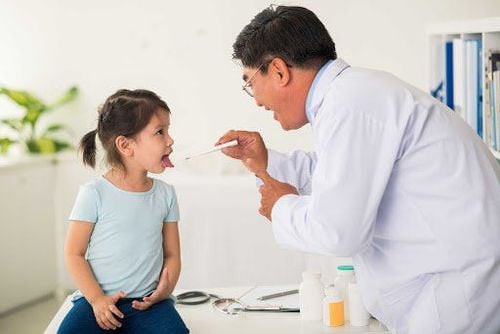
Ba mẹ có thể đưa trẻ đến Bệnh viện Đa khoa Quốc tế Vinmec để điều trị bệnh giảm thính lực
When a child shows abnormal signs of health, parents can take the child to Vinmec Health system for timely examination and treatment.
As a key area of Vinmec Health System, Pediatrics Department - Vinmec International General Hospital always brings satisfaction to customers and is highly appreciated by industry experts thanks to the following advantages:
gathers a team of leading doctors and doctors in Pediatrics: including leading experts, with high professional qualifications (professors, associate professors, doctorates, masters), experienced, having worked in different hospitals. big hospitals like Bach Mai, 108.. The doctors are all well-trained, professional, have a heart - reach, understand young psychology. In addition to domestic pediatric specialists, the Department of Pediatrics also has the participation of foreign experts (Japan, Singapore, Australia, USA) who are always pioneers in applying the latest and most effective treatment regimens. . Comprehensive services: In the field of Pediatrics, Vinmec provides a series of continuous medical examination and treatment services from Newborn to Pediatric and Vaccine,... according to international standards to help parents take care of their baby's health from birth to childhood. from birth to adulthood Specialized techniques: Vinmec has successfully deployed many specialized techniques to make the treatment of difficult diseases in Pediatrics more effective: neurosurgery - skull surgery, stem cell transplantation. blood in cancer treatment. Professional care: In addition to understanding children's psychology, Vinmec also pays special attention to the children's play space, helping them to have fun and get used to the hospital's environment, cooperate in treatment, improve the efficiency of medical treatment.
Please dial HOTLINE for more information or register for an appointment HERE. Download MyVinmec app to make appointments faster and to manage your bookings easily.





